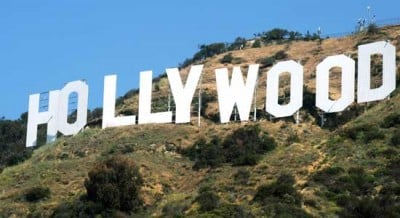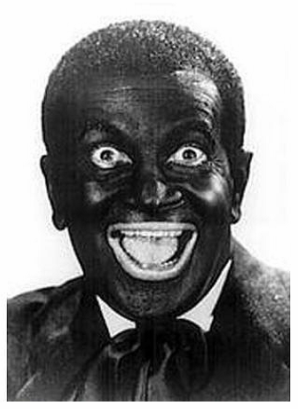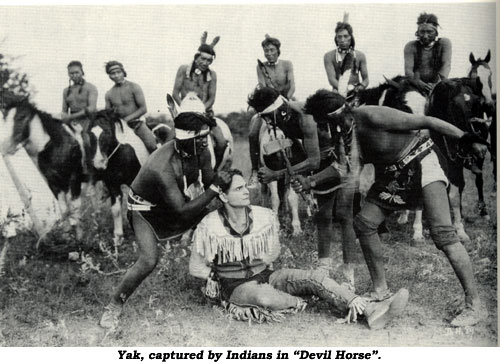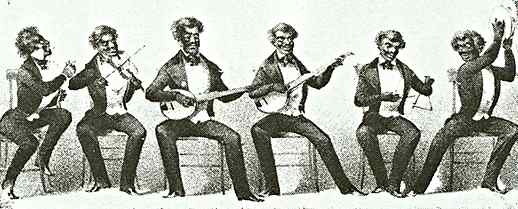The History of Hollywood: Propaganda for White Supremacy at Home and US Militarism Abroad

For centuries American film has been one of the most important apparatus used for perpetuating American white supremacy and justifying American military adventures.
Racism in film and white supremacy are so intricately interwoven into the fabric of America that they have become virtually undetectable, much like carbon monoxide, until the deadly damage has occurred. Film is a reflection of society and society in turn is influenced by film.
Ever since the Lumiere brothers first developed film in 1896, it has been an astoundingly effective racial propaganda tool. As the first universal mass medium it efficiently utilized high drama through the fixation of emotional sequences. Put simply, effective propaganda starts precisely where critical thinking ends.
To create drama, particularly in action and war movies, Hollywood needs bad guys, and through the consistent use of racial stereotypes these enemies have included the Vietnamese during the Vietnam war, the Russians throughout the Cold War, Muslims during the ongoing War on Terror and the Japanese after Pearl Harbor.
In American film and media, during the Yellow peril the widespread image of the Japanese as sub-human created an emotional context which formed a justification for the nuclear bombings in Hiroshima and Nagasaki that instantly slaughtered 140,000 innocent people, as well as the establishment of concentration camps for Japanese-Americans on US soil.
The first group in Hollywood history to have been depicted as dangerous savages is Native Americans.
The gross misrepresentation of Native Americans has been a longstanding problem for American film makers ever since the rise of 19th-century Western frontier literature, which portrayed pioneers as struggling with restless natives, without acknowledging the genocide committed by white men.
Despite vast evidence of Native American technological advances and complex civilization, Hollywood films depict native culture as a “blanket ethnicity,” thereby pigeonholing the various groups and cultures into one group defined by stereotypical tropes.
To this day white actors portray Native Americans using “Redface”, which is the practice of wearing feathers, war paint, etc. by non-natives, which propagate American Indian stereotypes. Johnny Depp recently wore Redface in the movie the Lone Ranger. Disturbingly, but hardly surprisingly, the movie won an Oscar nomination for “Best Makeup and Hair Styling”.
According to a recent YouGov survey, “make believe” childhood games like Cowboys and Indians are more popular amongst children than video games from the $60 billion gaming industry. One may ask oneself if the popular American childhood game of Cowboys and Indians is essentially the cultural equivalent of Germans playing a game with the same rules that might be called Nazis and Jews? Why then should we tolerate one and not the other, if not for a deep seeded racism towards Native Americans that we too are unwilling to acknowledge?
Most Hollywood financiers, directors and Oscar voters are rich, old white men. As in pretty much all facets of American capitalism, minorities are underrepresented in every stage of film and television production; from writing to directing to acting to producing.
Racism towards Blacks in American mass entertainment spans centuries.
This discrimination began during the minstrel era of 1830 to 1890. Minstrel shows were comprised of various skits, music and comedy that revolved around the ugliest stereotypes of Blacks. The stereotypical Black characters of the minstrel shows have played a large part in spreading racist images and perceptions across the world.
For half a decade, minstrel shows were the most popular form of entertainment in the United States.
The term Jim Crow is named after a popular 19th-century minstrel song that caricatured African Americans. “Jim Crow” eventually came to represent the brutal system of state-sanctioned apartheid and racial oppression in America.
The American minstrel show was effectively dead by WW1, and it was replaced by Hollywood’s Blackface later in vaudeville, Broadway, silent movies, and eventually talking pictures and film.
Historian Ken Paget notes that one of the first Blacks to perform in Blackface for white audiences was the man who invented tap dancing, William Henry Lane, aka Master Juba. Lane’s talent and skill were extraordinary and ultimately he became famous enough that he was able to perform in his own skin.
Early film rose with the dissemination of racial stereotypes to large audiences across the world. Early silent movies such as The Wooing and Wedding of a Coon in 1904, The Slave in 1905, The Sambo Series 1909-1911 and The Nigger in 1915 perpetuated negative depictions of Blacks through an exciting new mass medium.
Throughout Hollywood’s history Black entertainers and directors have always been ghettoised and segregated from mainstream film. Northern Blacks resorted to making silent movies of their own known as “Race movies” that were highly critical of American racism. To this day, Black narratives are ghettoised within a separated Black films industry. In America, Black is not merely a skin color it is also a movie genre, for films made by Blacks for Blacks because the understanding is that whites could not possibly be interested in movies with Black characters.
Mr. Paget illustrates how between 1930 and 1950, animators at Warner Brothers, Walt Disney, MGM, Looney Tunes, and many other independent studios, produced thousands of cartoons that unashamedly perpetuated the same old racist stereotypes. This period is now known as the golden age of animation, and right up until the mid 1960s, cartoons were screened before all feature films.
 Up to the mid twentieth century in Hollywood, Blackface was used in well over 90 instances. There eventually was a transition from Blackface to whitewashing, which marked the simultaneous, and intertwined persistence of white supremacy and so-called present day post-racialism. Whitewashing, whereby white actors depict characters of color without the use of Blackface is the poster-child of post-racialism: the idea that America is devoid of racial preference, discrimination, and prejudice. On the contrary, post-racialism is in fact the new racism. Post-racialism pretends that there is equal opportunity while ignoring the institutional and economic racism that infects inner cities and fills prisons.
Up to the mid twentieth century in Hollywood, Blackface was used in well over 90 instances. There eventually was a transition from Blackface to whitewashing, which marked the simultaneous, and intertwined persistence of white supremacy and so-called present day post-racialism. Whitewashing, whereby white actors depict characters of color without the use of Blackface is the poster-child of post-racialism: the idea that America is devoid of racial preference, discrimination, and prejudice. On the contrary, post-racialism is in fact the new racism. Post-racialism pretends that there is equal opportunity while ignoring the institutional and economic racism that infects inner cities and fills prisons.
The majority of people in America are minorities and yet this year every single Oscar nominee was white and ninety five percent of Oscar voters where white. It is hard for Black actors and actresses to gain prominence when white people are playing their roles.
For instance, the past year alone has seen the Scotsman Gerard Butler play the Egyptian God, Set, in Gods of Egypt, Emma Stone played an Asian American woman in Aloha, and Ridley Scott cast white actors in Exodus: Gods and Kings, the movie based on Moses.
Director Ridley Scott explained why Hollywood engages in the practice of whitewashing:
“I can’t mount a film of this budget, where I have to rely on tax rebates in Spain, and say that my lead actor is Mohammad so-and-so from such-and-such. I’m just not going to get it financed. So the question doesn’t even come up”.
Perhaps, nothing shows Hollywood’s racial insensitivity quite like the recent casting of actress Zoe Saldana in Blackface as Nina Simone in the upcoming biopic Nina. Nina Simone was one of the Black is beautiful movement’s most powerful historical figures.
The light skinned Saldana appears in Blackface. Ms. Saldana’s skin has been darkened, her hair has been made to look more ethnic, and prosthetics have been used to widen out her nose, alter her features and give her buck teeth.
Nina Simone made it very clear that her “job as a singer is to tell Blacks that Blackness, Black power and Black culture are from civilizations of unmatched beauty but we just don’t know it, and I will educate Blacks by whatever means necessary”.
The very darkness of Simone’s skin and her distinctly African features defined both her music and her politics. Therefore, to portray her in this way is nothing short of criminal, it is a tone-deaf gross whitewashing of unapologetic Blackness.
Nina Simone is part of a small group of women who came from being considered the least valuable human beings in all of the United States, a dark-skinned Black woman from Jim Crow South, and who became a music icon whose insistent Blackness has inspired generations.
Today’s generation of Muslims depicted in cinema are virtually limited to terrorists and national security threats, which serves to justify a dangerously oversized military abroad and unprecedented surveillance and erosion of civil liberties at home.
For many millennial Americans, the first exposure to Muslim “others” was the 1992 Disney classic Aladdin, in which most good characters were Westerners and the savages where invariably dark skinned. The children’s movies song lyric is instructive:
I come from a land, from a faraway place where the caravan camels roam / Where they cut off your ear if they don’t like your face / It’s barbaric, but hey, it’s home.
Ever since Aladdin, there have been a litany of propaganda films that lionize American military aggression across the Middle East. Hollywood’s Islamophobia operates in the service of American militarism and American militarism in turn operates in service of Hollywood. The U.S. military has had a dominant presence in Hollywood since the early 1900s through the Pentagon’s Film Liaison Office. The Liaison Office’s propaganda mission is clear: review American war movie scripts and decide whether to offer them support depending on if they conform with the interests of the country’s military leaders. In short, the Pentagon only supports Hollywood’s pro-war propaganda films.
America’s war on terror has cost Americans trillions of dollars and Arabs millions of lives and Hollywood has pumped billions of dollars into creating movies that endorse America’s disastrous foreign policy. In a single year at the Golden Globes, there were awards for Argo, where a bearded CIA hero saves American hostages from Iranian hordes; and Zero Dark Thirty, depicting the heroic hunt for Bin Laden; and President Obama’s favorite TV show Homeland, showing courageous Americans battling endless Muslim jihadis at home and abroad.
Then of course there is American Sniper, the highest grossing war film in US history. The American-Arab Anti-Discrimination Committee reported a spike in Islamophobia and hate crimes after the release of American Sniper which culminating in the recent slaying of three young Muslims in North Carolina who were shot in the head sniper execution style.
Despite the fact that the FBI confirms that white supremacists commit far more acts of domestic terrorism than their Muslim counterparts, Hollywood’s penchant for white supremacy continues to depict Muslims as sinister and exotic brutes incompatible with American civility, rather than portraying the full spectrum of human density of their lives.
White terrorism founded America, built the nation through slavery, and continues to be the nation’s largest domestic terrorist threat. From Redface, to Blackface, to Yellowface, to Brownface, Hollywood’s long and torrid history of white supremacy through their depiction of other races as dangerous or inferior has been a pillar of American racism at home and an integral weapon for American militarism abroad.
Garikai Chengu is a scholar at Harvard University. Contact him on [email protected]





